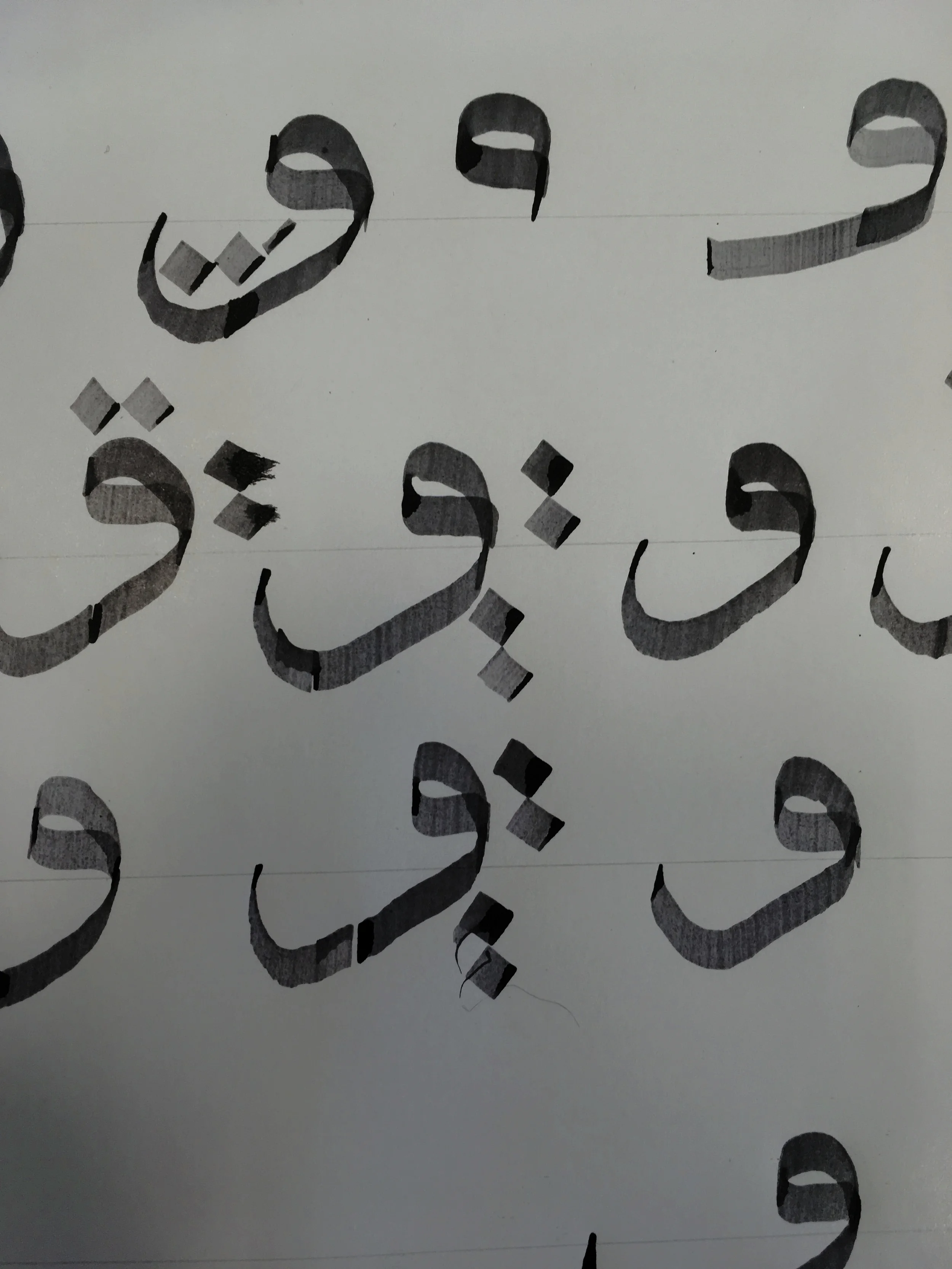When you look at a writing of thuluth script, you will notice invisible lines going in a certain angle that have measurements, like 5 dots or 10 dots. Zakariya hoca said, “these relationships of dimensions are only the beginning of writing.” Therefore, when you are first learning how to write in Arabic calligraphy, you are learning the measurements of letters.
Mysticism in Miniature Art: An interview with Artist Fatima Zahra Hassan
Calligraffiti: How Artist Gabriel Garay Blends Graffiti and Calligraphy
I have been doing graffiti since my teens, so as I came across Islamic art and Islamic Calligraphy it really captivated me. I looked at how the master calligraphers played with the structure of the letters, stretching, and bending the forms. I automatically saw the correlation with what I was, or should I say, what we were, doing as graffiti artist with the latin script
An Afternoon with Mohamed Zakariya: The Story of the Poem
Last fall, I had the privilege to sit with Zakariya hoca to talk about calligraphy and his experiences. But he shared with me more than just calligraphy. We talked about languages, poetry, past and current masters of this art, literature and of course calligraphy! For the next few months I will be sharing with you snippets of our conversation.
Calligraphy is Persistence: Profile of Calligrapher Shahryanshah Sirajuddin
Benjamin Franklin once said, “energy and persistence conquers all things.” If there is a calligrapher that embodies those words, Shahryanshah Sirajuddin is one. We begin a new year of artist profiles with someone whose determination and love of calligraphy brought him to Turkey, all the way from Indonesia. His sincere journey to learn the art of calligraphy is an inspiration for us living in the west where classes and teachers are not so readily available. His story teaches us that with persistence and energy any creative skill, not matter how overwhelming, can be learned.
A Student's Perspective of Arabic Calligraphy
Spending years studying Arabic, living and working in the Middle East, I was familiar with the Arabic alphabet and calligraphy, but always figured that it was too hard to learn -- after all, even writing in Arabic was difficult for me, much less cultivating the patience and fortitude to master penmanship in another language. Especially since I am not artistically inclined, I balked at first.
Geometric Art in Islam: A Conversation with Artist Eric Broug
Geometry is a universal language, and Islamic geometric design resonates/speaks to people, regardless of age, background, etc. I see this all the time in my workshops. People of course appreciate the beauty of Islamic geometric design, but it is also the ability they can develop to ‘read’ it, to understand it, that is enlightening.
Calligraphy is Tradition: Profile of Calligrapher Gulnaz Mahboob
Calligraphy is Expression: An Interview with Master Artist Sabah Arbilli
Calligraphy is Spirituality: An interview with Turkish calligrapher Fatih Özkafa
In the art of calligraphy, the measure of the letters is also very important. A calligraphy artist works for years to write according to these measures. So, you cannot enlarge or shrink the letters as you wish, you cannot shorten them or elongate them as you feel. There are countless rules. But these rules further enhance the taste of this art.













